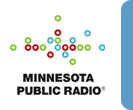 |

 |
  The Savvy Traveler The Savvy Traveler
Follow Diana Nyad and special guests around the world during this hour-long weekly magazine about modern travel, adventure, and recreation.
|




 |
Have ideas on how to use the news and other featured content on Sound Learning? What services and features would you like Sound Learning to provide?
Tell us how you use this site, what you like and dislike about it, what else you'd like to see here-anything. Help us help you.
Send us your comments or ideas for using and improving Sound Learning.
Sign up for our
monthly newsletter (September–May) >>
|

|  |

Student Exercises
- Students listen to the weekly feature stories to learn about different places in the world. They browse through the archives to learn about a variety of places or, if doing a research project on a particular place, search for stories and information about it.
- The majority of the shows include a "postcard," a short travel essay written and read by a freelance writer. As students browse through these postcards, they listen for how the writer tells a story and shares with listeners a sense of place. Students also pay attention to the use of music and sound effects that help tell the story and create an image of the place.
- Students create their own "postcard" travel essay about a place they know well (e.g., a park, a part of the school, a community center). Following the format of the Savvy Traveler postcards, students write a descriptive essay or story that includes many details about the place and people found there. Adding music and sound effects to help create a sense of place, students perform and tape their essays.
Tips and Techniques
- To find a collection of the postcard essays, search for the term "postcard."
- Have students read the scripts before, during, or after they listen to the audio clips.
- Remember to have students cite sources for information or quotations they use in reports, multimedia documents, or other educational projects, including photos and audio clips. Students should include the following information in their citation: document title or description, date of publication or when they found it on the Web, an address (URL), and, if possible, the author, photographer, or artist.
|  |

